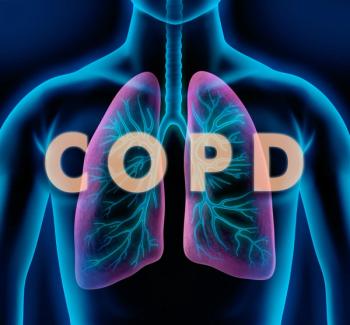
In part 1 of our interview with David P. Carbone, MD, PhD, The Ohio State University, he addressed why it is important to conduct biomarker testing in both lung cancer overall and non–small cell lung cancer more specifically.

In part 1 of our interview with David P. Carbone, MD, PhD, The Ohio State University, he addressed why it is important to conduct biomarker testing in both lung cancer overall and non–small cell lung cancer more specifically.

The new guidelines are another method of keeping a high-quality standard for colorectal cancer screening.

Treatment with bimekizumab showed consistent efficacy through 52 weeks in patients with psoriatic arthritis in a post hoc analysis of the BE OPTIMAL, BE COMPLETE, and BE VITAL trials.

Both cycling and home-based exercise training helped maintain gait and balance parameters in children with Duchenne muscular dystrophy (DMD), with cycling training also improving antero-posterior balance.

These study authors hope their findings will inform future research on gastrointestinal stromal tumors (GIST) and close care gaps for minority patient populations.

A federal judge determined that all people being actively treated for HIV can enlist in the military.

A retrospective, single-center cohort study utilized liver ultrasound, serum collection, and proteome analysis to draw associations between spinal motor neuron (SMN) protein depletion and heightened risk for fatty liver disease in spinal muscular atrophy (SMA).

A recent study estimates the prevalence of primary care and emergency department visits by young children to treat respiratory syncytial virus (RSV), finding that the rates vary widely by country.

New findings point to a 6% decrease in mortality risk for each unit increase in body mass index (BMI).

There is a critical need for improved athlete care as rising injury rates demand greater investment in prevention and support.

Acute clinical events with stable MRI were more likely among patients with multiple sclerosis who had longer disease duration, received highly effective disease-modifying therapies, and who presented with fatigue.

The complete response letter (CRL) was issued based on a pre-approval inspection at a third-party fill/finish manufacturer.

Spotty vaccine supplies have consumers searching for protection as the FDA prepares to approve updated COVID-19 shots.

Spouses of patients with cancer face a significantly higher risk of suicide attempts and suicide death, especially within the first year of diagnosis, according to one study.

The FDA's decision to reject midomafetamine (MDMA) capsules in combination with assisted psychotherapy (MDMA-AT) for adults with PTSD reignited the controversial conversation around investigative psychedelic therapy.

The 10th annual meeting of the Family Heart Global Summit will bring together leading scientists and practitioners with patients to discuss treatment of inherited lipid disorders.

Cancer detection was slower to rebound after the COVID-19 pandemic compared with endoscopic activity, specifically in gastric cancers such as colorectal cancer.

The birth rate in the US continues its 17-year decline, with fertility levels now at their lowest in decades, according to CDC data.

A new review highlights the urgent need for research-driven solutions in breast cancer to enhance early detection, treatment, and patient support across diverse populations.

In honor of Spinal Muscular Atrophy (SMA) Awareness Month, Abraham Homer, MS, the gaming technology supervisor and creative technologist at Children's Hospital Colorado, shared how virtual reality transformed care for patients with SMA.

At AIDS 2024 in July, Kelly Dyer, MD, Perelman School of Medicine, presented research findings from an investigation at the intersection of health equity, substance use detox, infectious disease screening, and patient harm reduction.

The majority of federal savings indicated by the Inflation Reduction Act's Drug Price Negotiation Program can be attributed to 3 drugs.

Amgen announces new FDA-approved oral treatment option for children and adolescents with moderate to severe plaque psoriasis.

Most patients with chronic obstructive pulmonary disease (COPD) remain untreated after diagnosis, leading to frequent exacerbations.

Changes in formulary coverage for 2024 are impacting Medicare patients' access to and ability to afford various prescription medications.

To continue the response they experienced with a first autologous stem‐cell transplant (ASCT) for their multiple myeloma, patients in this analysis received a second ASCT, with French investigators evaluating their outcomes.

United Urology Group, with 4 practices in Maryland, Colorado, Arizona, and Tennessee, has agreed to be acquired by OneOncology, which last year was acquired by TPG and AmeriSourceBergen in a $2.1 billion transaction.

Many patients could be at risk of colorectal cancer (CRC) without realizing as most patients don’t know if their immediate family has had CRC.

A bibliometric analysis reveals a significant increase in research on alopecia areata treatment over the past 2 decades, with a focus on identifying effective therapies and understanding underlying mechanisms of the condition.

Patients with non-small cell lung cancer (NSCLC) can use lazertinib in combination with amivantamab as a first-line treatment.

259 Prospect Plains Rd, Bldg H
Cranbury, NJ 08512
© 2025 MJH Life Sciences®
All rights reserved.
